The Ten Best History Books of 2021
Our favorite titles of the year resurrect forgotten histories and help explain how the U.S. got to where it is today
:focal(1400x1053:1401x1054)/https://tf-cmsv2-smithsonianmag-media.s3.amazonaws.com/filer_public/17/09/17095acb-748c-476b-b985-ec5b7529607a/inarticle-history-books2021-1400w.jpg)
After 2020 brought the most devastating global pandemic in a century and a national reckoning with systemic racism, 2021 ushered in a number of welcome developments, including Covid vaccines, the return of beloved social traditions like the Olympics and public performances, and incremental but measurable progress in the fight against racial injustice.
During this year of change, these ten titles collectively serve a dual purpose. Some offer a respite from reality, transporting readers to such varied locales as ancient Rome, Gilded Age America and Angkor in Cambodia. Others reflect on the fraught nature of the current moment, detailing how the nation’s past—including the mistreatment of Japanese Americans during World War II and police brutality—informs its present and future. From a chronicle of civilization told through clocks to a quest for Indigenous justice in colonial Pennsylvania, these were some of our favorite history books of 2021.
Four Lost Cities: A Secret History of the Urban Age by Annalee Newitz
“It’s terrifying to realize that most of humanity lives in places that are destined to die,” writes Annalee Newitz in the opening pages of Four Lost Cities. This stark statement sets the stage for the journalist’s incisive exploration of how cities collapse—a topic with clear ramifications for the “global-warming present,” as Kirkus notes in its review of the book. Centered on the ancient metropolises of Çatalhöyük, a Neolithic settlement in southern Anatolia; Pompeii, the Roman city razed by Mount Vesuvius’ eruption in 79 C.E.; Angkor, the medieval Cambodian capital of the Khmer Empire; and Cahokia, a pre-Hispanic metropolis in what is now Illinois, Four Lost Cities traces its subjects’ successes and failures, underscoring surprising connections between these ostensibly disparate societies.
All four cities boasted sophisticated infrastructure systems and ingenious feats of engineering. Angkor, for instance, became an economic powerhouse in large part due to its complex network of canals and reservoirs, while Cahokia was known for its towering earthen pyramids, which locals imbued with spiritual significance. Despite these innovations, the featured urban hubs eventually succumbed to what Newitz describes as “prolonged periods of political instability”—often precipitated by poor leadership and social hierarchies—“coupled with environmental collapse.” These same problems plague modern cities, the writer argues, but the past offers valuable lessons for preventing such disasters in the future, including investing in “resilient infrastructure, … public plazas, domestic spaces for everyone, social mobility and leaders who treat the city’s workers with dignity.”
Four Lost Cities: A Secret History of the Urban Age
A quest to explore some of the most spectacular ancient cities in human history―and figure out why people abandoned them
Covered With Night: A Story of Murder and Indigenous Justice in Early America by Nicole Eustace
In the winter of 1722, two white fur traders murdered Seneca hunter Sawantaeny after he refused their drunken, underhanded attempts to strike a deal. The ensuing furor, writes historian Nicole Eustace in Covered With Night, threatened to spark outright war between English colonists and the Indigenous inhabitants of the mid-Atlantic. Rather than enter into a prolonged, bloody battle, the Susquehanna River valley’s Native peoples forged an agreement, welcoming white traders back into their villages once Sawantaeny’s body had been metaphorically “covered,” or laid to rest in a “respectful, ritualized way,” as Eustace told Smithsonian magazine’s Karin Wulf earlier this year.
“Native people believe that a crisis of murder makes a rupture in the community and that rupture needs to be repaired,” Eustace added. “They are not focused on vengeance; they are focused on repair, on rebuilding community. And that requires a variety of actions. They want emotional reconciliation. They want economic restitution.”
The months of negotiation that followed culminated in the Albany Treaty of 1722, which provided both “ritual condolences and reparation payments” for Sawantaeny’s murder, according to Eustace. Little known today, the historian argues, the agreement underscores the differences between Native and colonial conceptions of justice. Whereas the former emphasized what would now be considered restorative justice (an approach that seeks to repair harm caused by a crime), the latter focused on harsh reprisal, meting out swift executions for suspects found guilty. “The Pennsylvania colonists never really say explicitly, ‘We’re following Native protocols. We’re accepting the precepts of Native justice,’” Eustace explained to Smithsonian. “But they do it because in practical terms they didn’t have a choice if they wanted to resolve the situation.”
Covered with Night: A Story of Murder and Indigenous Justice in Early America
An immersive tale of the killing of a Native American man and its far-reaching implications for the definition of justice from early America to today
Empire of Pain: The Secret History of the Sackler Dynasty by Patrick Radden Keefe
The Sackler family’s role in triggering the U.S. opioid epidemic attracted renewed attention this year with the release of “Dopesick,” a Hulu miniseries based on Beth Macy’s 2018 book of the same name, and Patrick Radden Keefe’s award-winning Empire of Pain, which exhaustively examines the rise—and very public fall—of the drug-peddling American “dynasty.”
Meticulously researched, the book traces its roots to the early 2010s, when the journalist was reporting on Mexican drug cartels for the New York Times magazine. As Keefe tells the London Times, he realized that 25 percent of the revenue generated by OxyContin, the most popular pill pushed by Sackler-owned Purdue Pharma, came from the black market. Despite this trend, the family was better known for its donations to leading art museums than its part in fueling opioid addiction. “There was a family that had made billions of dollars from the sale of a drug that had such a destructive legacy,” Keefe says, “yet hadn’t seemed touched by that legacy.” Infuriated, he began writing what would become Empire of Pain.
The resulting 560-page exposé draws on newly released court documents, interviews with more than 200 people and the author’s personal accounts of the Sacklers’ attempts to intimidate him into silence. As the New York Times notes in its review, the book “paint[s] a devastating portrait of a family consumed by greed and unwilling to take the slightest responsibility or show the least sympathy for what it wrought.”
Empire of Pain: The Secret History of the Sackler Dynasty
A grand, devastating portrait of three generations of the Sackler family, famed for their philanthropy, whose fortune was built by Valium and whose reputation was destroyed by OxyContin
Until I Am Free: Fannie Lou Hamer's Enduring Message to America by Keisha N. Blain
Historian Keisha N. Blain derived the title of her latest book from a well-known quote by its subject, voting rights activist Fannie Lou Hamer: “We have a long fight and this fight is not mine alone, but you are not free whether you are white or Black, until I am free.” As Blain wrote for Smithsonian last year, Hamer, who grew up in the Jim Crow South in a family of sharecroppers, first learned about her right to vote in 1962, at the age of 44. After attempting to register to vote in Mississippi, she faced verbal and physical threats of violence—experiences that only strengthened her resolve.
Blain’s book is one of two new Hamer biographies released in 2021. The other, Walk With Me by historian Kate Clifford Larson, offers a more straightforward account of the activist’s life. Comparatively, Blain’s volume situates Hamer in the broader political context of the civil rights movement. Both titles represent a long-overdue celebration of a woman whose contributions to the fight for equal rights have historically been overshadowed by men like Martin Luther King Jr. and Malcolm X.
Until I Am Free: Fannie Lou Hamer's Enduring Message to America
Explores the Black activist’s ideas and political strategies, highlighting their relevance for tackling modern social issues including voter suppression, police violence, and economic inequality
Into the Forest: A Holocaust Story of Survival, Triumph, and Love by Rebecca Frankel
On April 30, 1942, 11-year-old Philip Lazowski found himself separated from his family during a Nazi selection in the Polish town of Zhetel. Realizing that the elderly, the infirm and unaccompanied children were being sent in one direction and families with work permits in the other, he tried to blend in with the children of a woman he recognized, only to hear her hiss, “Don’t stand next to us. You don’t belong in this group.” Looking around, Lazowski soon spotted another stranger and her daughters. Desperate, he pleaded with her to let him join them. After pausing momentarily, the woman—Miriam Rabinowitz—took his hand and said, “If the Nazis let me live with two children, they’ll let me live with three.”
All four survived the selection. From there, however, their paths temporarily diverged. Lazowski reunited with his family, remaining imprisoned in the Zhetel ghetto before fleeing into the nearby woods, where he remained hidden for the next two and a half years. Miriam, her husband Morris and their two children similarly sought refuge in a forest but did not encounter Lazowski again until after the war. (Lazowski later married one of the Rabinowitz daughters, Ruth, after running into Miriam at a 1953 wedding in Brooklyn—a “stroke of luck that … mirrors the random twists of fate that enabled the family to survive while so many others didn’t,” per Publishers Weekly.)
As journalist Rebecca Frankel writes in Into the Forest, the Rabinowitzes and Lazowski were among the roughly 25,000 Jews who survived the war by hiding out in the woods of Eastern Europe. The majority of these individuals (about 15,000) joined the partisan movement, eking out a meager existence as ragtag bands of resistance fighters, but others, like the Rabinowitzes, formed makeshift family camps, “aiming not for revenge but survival,” according to the Forward. Frankel’s account of the family’s two-year sojourn in the woods captures the harsh realities of this lesser-known chapter in Holocaust history, detailing how forest refugees foraged for food (or stole from locals when supplies were scarce), dug underground shelters and remained constantly on the move in hopes of avoiding Nazi raids. Morris, who worked in the lumber business, used his pre-war connections and knowledge of the forest to help his family survive, avoiding the partisans “in the hope of keeping outside the fighting fray,” as Frankel writes for the New York Times. Today, she adds, the stories of those who escaped into the woods remain “so elusive” that some scholars have referred to them as “the margins of the Holocaust.”
Into the Forest: A Holocaust Story of Survival, Triumph, and Love
From a little-known chapter of Holocaust history, one family’s inspiring true story
The Man Who Hated Women: Sex, Censorship, and Civil Liberties in the Gilded Age by Amy Sohn
Though its title might suggest otherwise, The Man Who Hated Women focuses far more on the American women whose rights Anthony Comstock sought to suppress than the sexist government official himself. As novelist and columnist Amy Sohn explains in her narrative non-fiction debut, Comstock, a dry goods seller who moonlighted as a special agent to the U.S. Post Office and the secretary of the New York Society for the Suppression of Vice, spent more than four decades hounding activists who advocated for women’s reproductive rights. In 1873, he lobbied Congress to pass the Comstock Act, which made it illegal to send “obscene, lewd or lascivious” material—including documents related to birth control and sexual health—through the mail; in his view, the author adds, “obscenity, which he called a ‘hydra-headed-monster,’ led to prostitution, illness, death, abortions and venereal disease.”
The Man Who Hated Women centers on eight women activists targeted by Comstock: among others, Victoria Claflin Woodhull, the first woman to run for president; anarchist and labor organizer Emma Goldman; Planned Parenthood founder and notorious eugenicist Margaret Sanger; abortionist Ann “Madam Restell” Lohman; and homeopath Sarah Chase, who fought back against censorship by dubbing a birth control device the “Comstock Syringe.” Weaving together these women’s stories, Sohn identifies striking parallels between 19th- and 20th-century debates and contemporary threats to abortion rights. “Risking destitution, imprisonment and death,” writes the author in the book’s introduction, “[these activists] defined reproductive liberty as an American right, one as vital as those enshrined in the Constitution. … Without understanding [them], we cannot fight the assault on women’s bodies and souls that continues even today.”
The Man Who Hated Women: Sex, Censorship, and Civil Liberties in the Gilded Age
A narrative history of Anthony Comstock, anti-vice activist and U.S. Postal Inspector, and the remarkable women who opposed his war on women’s rights at the turn of the 20th century
African Europeans: An Untold History by Olivette Otele
In this sweeping chronicle, scholar Olivette Otele challenges white-centric narratives of European history by tracing African people’s presence on the continent from the 3rd century to the 21st. Featuring a rich cast of characters, including Renaissance duke Alessandro de’ Medici, 18th-century polymath Joseph Boulogne, and actress and artists’ muse Jeanne Duval, African Europeans artfully examines changing conceptions of race and how these ideas have shaped both real-world experiences and accounts of the past.
“The term ‘African European’ is … a provocation for those who deny that one can have multiple identities and even citizenships, as well as those who claim that they do not ‘see color,’” writes Otele in the book’s introduction. “The aims of this volume are to understand connections across time and space, to debunk persistent myths, and to revive and celebrate the lives of African Europeans.”
African Europeans: An Untold History
A dazzling history of Africans in Europe, revealing their unacknowledged role in shaping the continent
The Eagles of Heart Mountain by Bradford Pearson
Life at the Heart Mountain Relocation Center in Wyoming, where some 14,000 Japanese Americans were incarcerated between August 1942 and November 1945, was punctuated by harsh winters, inadequate medical care, and racist treatment by white staff and locals. A year or so after the camp’s opening, however, prisoners gained an unlikely source of hope: high school football. As journalist Bradford Pearson writes in The Eagles of Heart Mountain, the team—made up mainly of second-generation immigrants who’d never played the sport before—went undefeated in the 1943 season and lost just one game the year after that.
Pearson juxtaposes the heartwarming tale of the underdog Eagles with details of how players resisted the draft. Reluctant to fight on behalf of a country that had ordered their detainment, several of the young men refused to enlist, leaving them vulnerable to (additional) imprisonment. “We are not being disloyal,” declared the Heart Mountain–based Fair Play Committee. “We are not evading the draft. We are all loyal Americans fighting for justice and democracy right here at home.”
The Eagles of Heart Mountain: A True Story of Football, Incarceration, and Resistance in World War II America
The impeccably researched, deeply moving, never-before-told tale about a World War II incarceration camp in Wyoming and its extraordinary high school football team
About Time: A History of Civilization in Twelve Clocks by David Rooney
“[F]or thousands of years,” argues David Rooney in About Time, humans have “harnessed, politicized and weaponized” time, using clocks to “wield power, make money, govern citizens and control lives.” A former curator of timekeeping at the Royal Observatory Greenwich, home of Greenwich Mean Time, Rooney traces his fascination with horology to his childhood, when his parents ran a clockmaking and restoration business. Over a lifetime spent studying clocks, the scholar realized that the devices could be used as windows into civilization, revealing insights on “capitalism, the exchange of knowledge, the building of empires and the radical changes to our lives brought by industrialization.”
About Time centers on 12 clocks created over some 2,000 years, from a sundial at the Roman forum in 263 B.C.E. to a plutonium time-capsule clock buried in Osaka, Japan, in 1970. As the centuries progressed, timekeeping tools became increasingly accurate—a development that could “never [be] politically neutral,” notes the Washington Post in its review of the book. Instead, the standardization of time enabled capitalist endeavors like the opening and closing of financial markets and social control measures such as laws limiting when consumers could purchase alcohol. Overall, writes Rooney, his “personal, idiosyncratic and above all partial account” seeks to demonstrate that “monumental timekeepers mounted high up on towers or public buildings have been put there to keep us in order, in a world of violent disorder, … as far back as we care to look.”
About Time: A History of Civilization in Twelve Clocks
A captivating, surprising history of timekeeping and how it has shaped our world
America on Fire: The Untold History of Police Violence and Black Rebellion Since the 1960s by Elizabeth Hinton
Between July 1964 and April 2001, almost 2,000 urban rebellionssparked by racially motivated police intimidation, harassment and violence broke out across the U.S. These “explosions of collective resistance to an unequal and violent order,” in Elizabeth Hinton’s words, are often characterized as riots—a term the Yale historian rejects in favor of “rebellion.” Citing a rich trove of historical data, Hinton’s America on Fire convincingly argues that Black rebellions occur in response to police violence rather than the other way around. President Lyndon B. Johnson’s 1960s “War on Crime,” for example, contributed to the growth of local police forces that “encroach[ed on] all aspects of Black social life, transforming typical youthful transgressions into fodder for police assaults on young Black people,” per the New Yorker.
Published almost exactly a year after George Floyd was killed in police custody, America on Fire deftly draws parallels between the violence that followed the assassinations of civil rights leaders in the 1960s and the 2020 protests. Only “extraordinary” acts of police violence, like the well-documented murder of Floyd, prompt such rebellions today: “[T]he daily violence and indignities that Black people experience in encounters with police go unaddressed,” notes the Washington Post in its review of the book. “In this sense, Hinton argues that the status quo has won. Ordinary police violence has become normalized, run-of-the-mill. We respond to only its most brutal forms.”
America on Fire: The Untold History of Police Violence and Black Rebellion Since the 1960s
From one of our top historians, a groundbreaking story of policing and “riots” that shatters our understanding of the post–civil rights era
A Note to our Readers
Smithsonian magazine participates in affiliate link advertising programs. If you purchase an item through these links, we receive a commission.
/https://tf-cmsv2-smithsonianmag-media.s3.amazonaws.com/accounts/headshot/mellon.png)
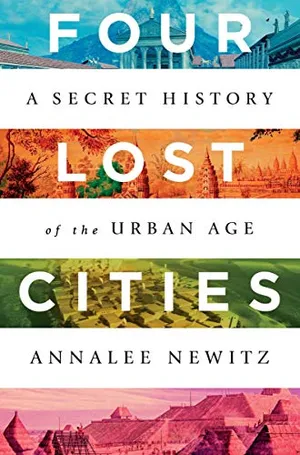
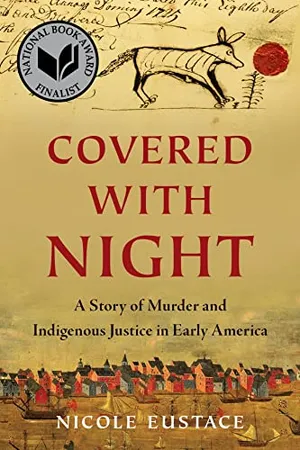
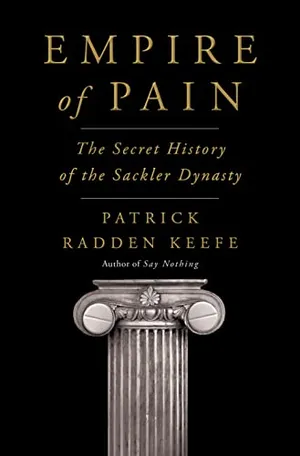
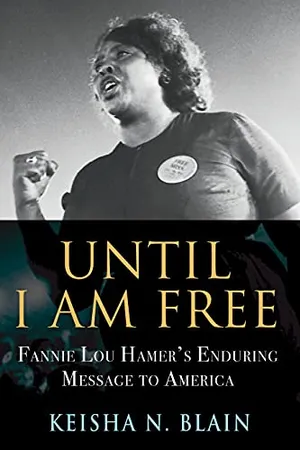
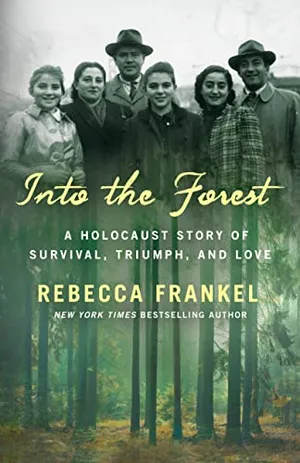
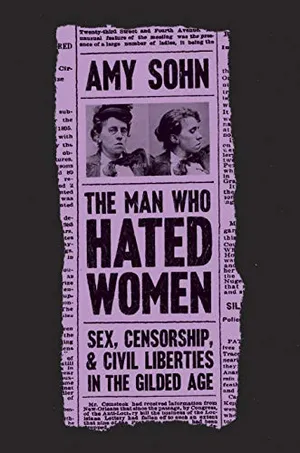

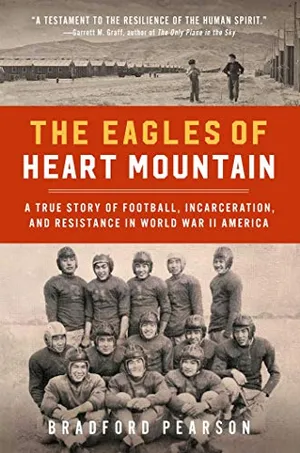
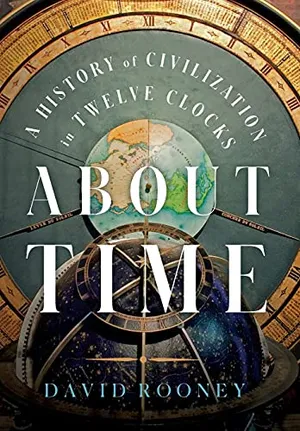
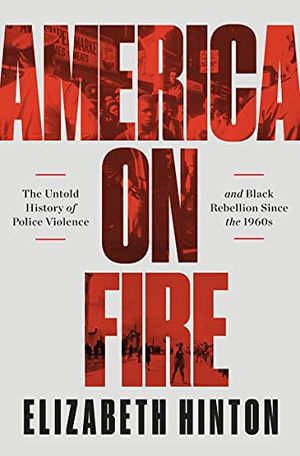
/https://tf-cmsv2-smithsonianmag-media.s3.amazonaws.com/accounts/headshot/mellon.png)